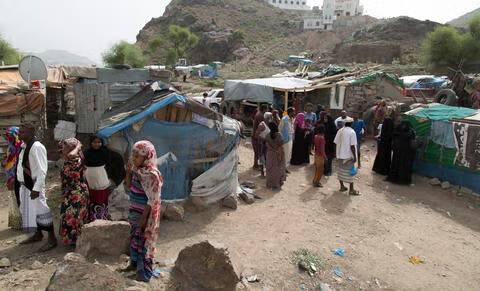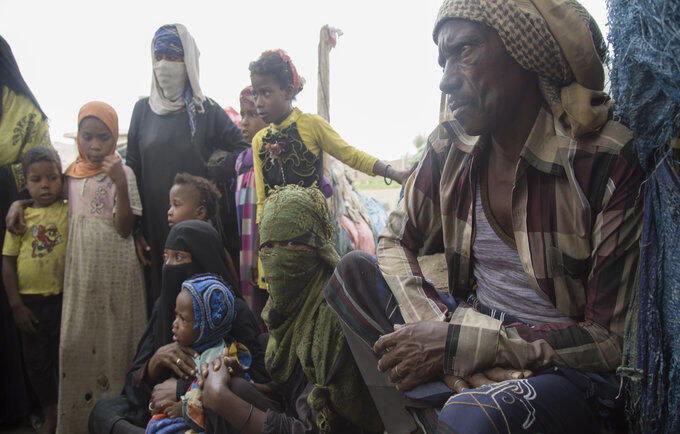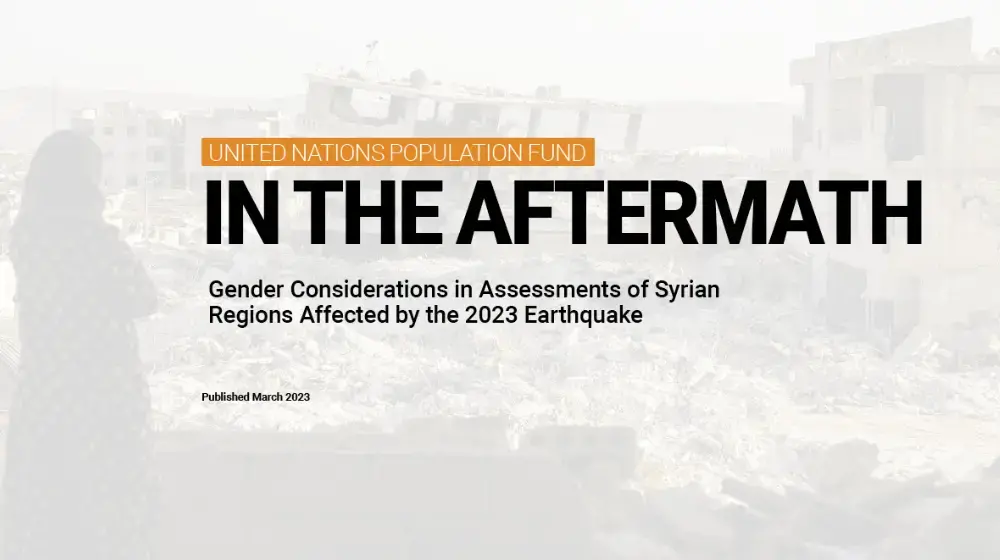Yemen is entering its fourth year of war. Today, it is the world’s worst humanitarian crisis. Every passing day in conflict brings Yemen closer to famine, and means more damage for the country’s basic infrastructure, which was already fragile before the war. Here are five reasons why #YemenCantWait:
-
Millions are displaced and impoverished:

Displaced people fleeing the war in Taiz. ©UNFPA- Yemen
According to the Office of the United Nations’ High Commissioner for Human Rights (OHCHR), there have been 16,706 civilian casualties in Yemen between March 2015 and June 2018 including 6,475 deaths and 10,231 injuries. OHCHR estimates that the real figure is likely to be significantly higher.
According to the United Nations Office for the Coordination of Humanitarian Affairs (OCHA), 22.2 million Yemeni out of the total population of 29.3 million need some sort of humanitarian assistance including 11.3 million Yemenis who need immediate assistance. 76% of the 2 million Yemenis who were displaced by the fighting are women and girls.
-
A looming famine:
Prior to the start of the war, Yemen imported 90% of its food, medical supplies and fuel. Since the beginning of the war, different levels of restrictions of goods’ movement across the Yemeni borders have decreased the supply of basic goods and medicines. The worsening economic situation makes the little available in Yemeni markets unaffordable to the majority of vulnerable populations.
8.4 million Yemenis are on the brink of starvation including 1.8 million children under the age of five who are suffering from acute malnutrition. 1.1 million pregnant and breastfeeding mothers are severely malnourished which increases the chances of miscarriages, underweight newborns and stillbirths.
-
Cholera outbreak:
Yemen is currently home to an unprecedented outbreak of cholera with over 1 million suspected cases and 2,310 reported deaths. 16 million Yemenis do not have access to clean water, sanitation and hygiene. Half of the Yemeni health facilities have stopped working with no doctors in 18% of Yemeni districts. Last May, an emergency state was declared indicating that the healthcare system in Yemen is incapable of containing the spreading epidemic.
-

Zahraa, a Yemeni displaced women in Taiz
who suffered several miscarriages.
©UNFPA- YemenReproductive health in tatters:
Only one third of Yemen’s reproductive health facilities are functioning. Even before the war, Yemen had one of the highest mortality rates in the region. Now the rate is likely to have doubled. Devastating levels of poverty left millions of women unable to afford adequate healthcare, or even public transportation to functioning medical facilities including when they need life-saving obstetric healthcare. Safety has also been a major concern. In August, Al Hodeida’s biggest hospital and a major antenatal healthcare facility, Al Thawra Hospital, was brutally attacked.
-
Damage that is likely to last for generations:
In addition to the overwhelming damage to the country’s basic infrastructure and healthcare system which will take many years to repair, the future Yemeni generations are given a disturbing start of life. Malnourished at birth and during early infancy, and with an epidemic outbreak, children’s health is at great risk.
Additionally, at least 20 attacks have been reported and verified against schools.66% of all Yemeni schools have been damaged by heavy violence. 27% of Yemeni schools have been closed. 2 million Yemeni children are out of schools.
In the past few years, alarming rates of boys’ recruitment as soldiers and girls’ being married off before the age of 18 have been reported.
Want to help?
Send a gift to help women in Yemen deliver their babies safely - every cent will be DOUBLED by one of our generous supporters.




